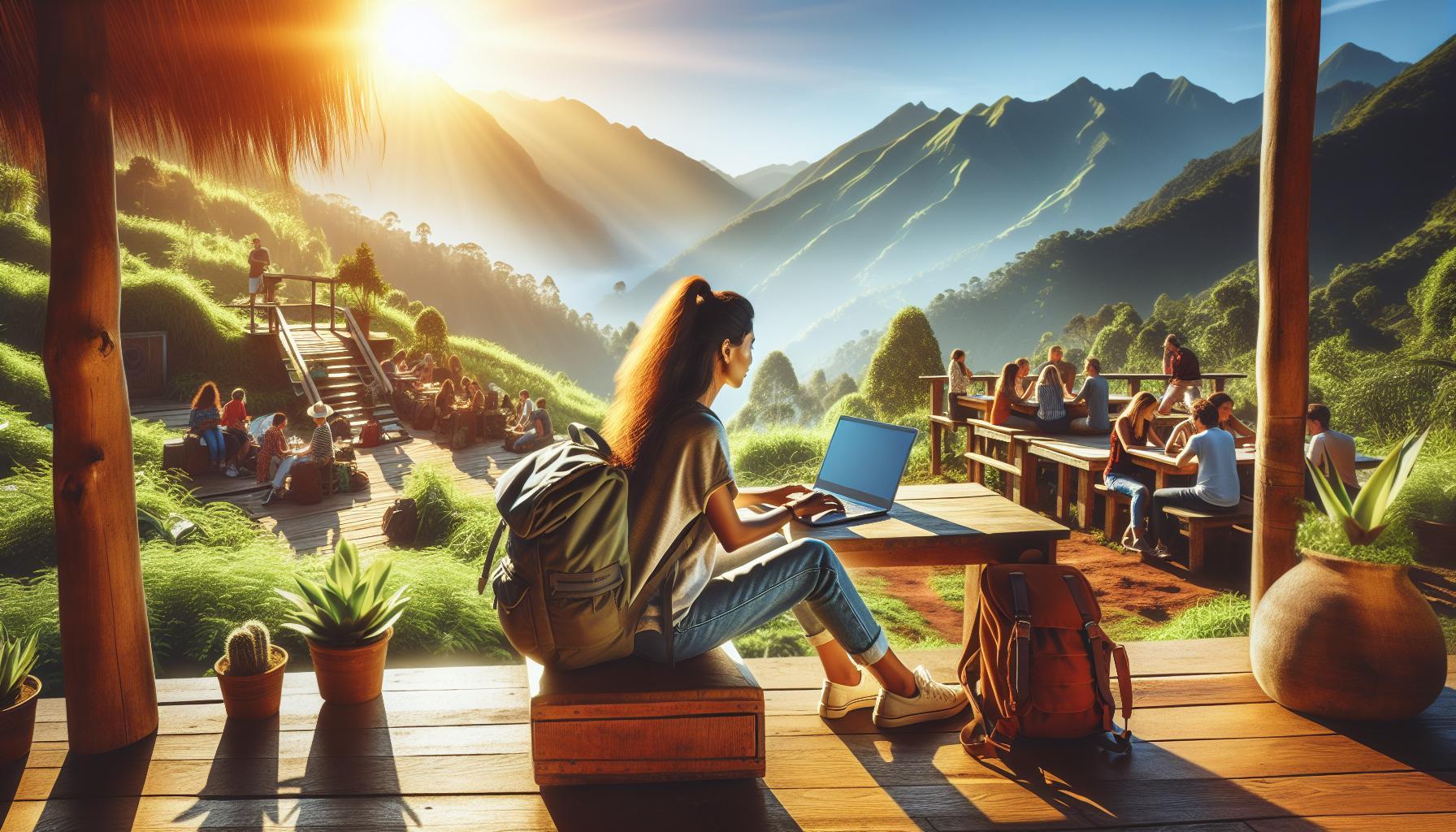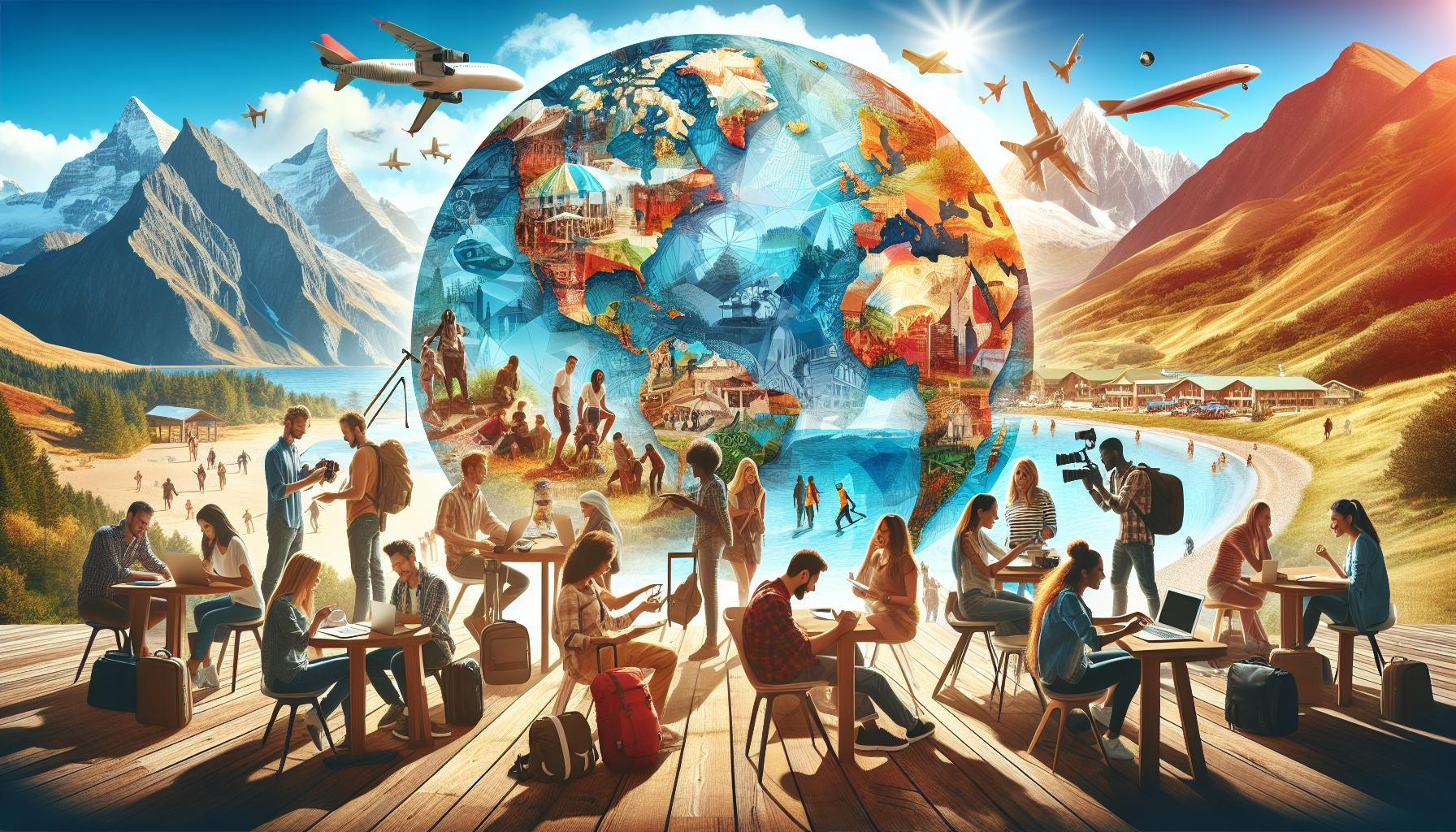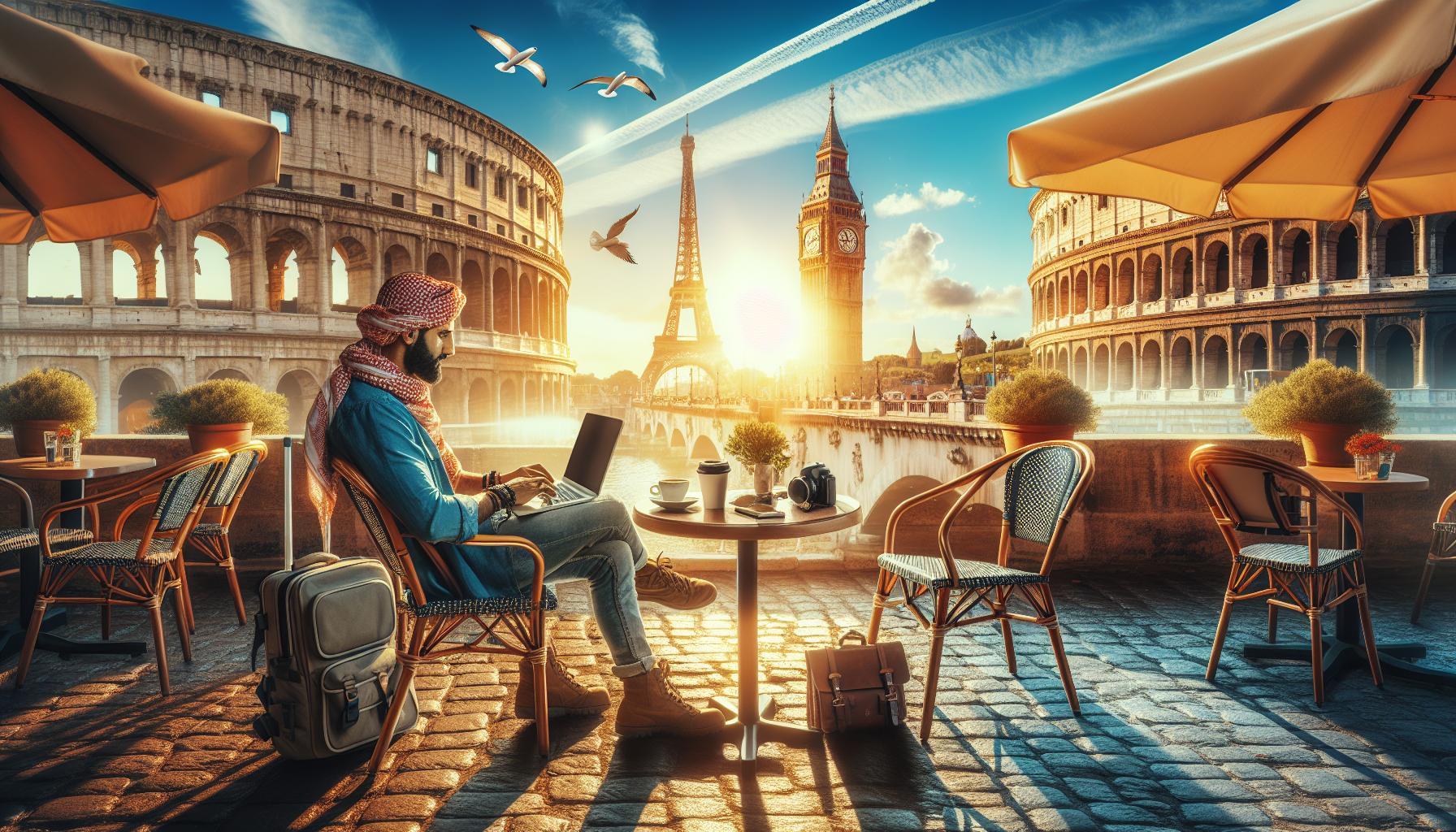Did you know that solo travel is on the rise, with more people seeking independence and adventure? However, the question remains: where are the safest destinations for navigating solo journeys? In “Safest Place for Solo Travel: Go Boldly, Travel Securely,” we’ll explore not only stunning locations but also practical strategies for ensuring your safety while traveling alone.
As the world becomes increasingly interconnected, the appeal of solo travel grows stronger. Whether you’re a seasoned nomad or embarking on your first solo trip, you might have concerns about choosing the right destination and staying secure. This guide will help you identify safe havens that encourage exploration while prioritizing your peace of mind.
Join us as we uncover compelling destinations that blend safety with unforgettable experiences, offering tips that empower you to travel boldly and securely. Embrace your wanderlust, and let’s make your next solo adventure both exciting and safe!
Safest Destinations for Solo Travelers
Exploring new destinations can be exhilarating, especially when traveling alone. Some places worldwide embrace solo travelers with open arms, boasting low crime rates, friendly locals, and robust tourism infrastructures. Countries like Japan and New Zealand consistently top the charts as the safest travel destinations. In Japan, the public transportation system is not only efficient but also exceptionally safe, allowing solo adventurers to explore bustling cities like Tokyo or serene mountainsides in the Japanese Alps without a hitch. New Zealand’s breathtaking landscapes and tight-knit communities not only inspire adventure but also support the safety of solo travelers-you’re likely to find a wealth of fellow wanderers ready to share tips or company.
Top
When deciding on a trip, consider these standout destinations known for their safety and appeal to solo travelers:
- Iceland: Renowned for its striking natural beauty and friendly atmosphere, Iceland boasts a low crime rate and a supportive community.
- Portugal: With welcoming locals and vibrant cities like Lisbon and Porto, Portugal offers a mix of culture, safety, and stunning landscapes.
- Canada: Friendly cities such as Vancouver and Quebec City, along with their well-marked tourist paths, make Canada an exemplary choice for solitary explorers.
- Norway: Known for breathtaking fjords and a high quality of life, Norway is incredibly safe for solo travelers, particularly in popular areas like Oslo and Bergen.
Cities like Amsterdam and Barcelona also provide a unique atmosphere perfect for solo exploration, complete with vibrant arts and café scenes and ample opportunities for social engagement. Local tours or group classes can be a fantastic way to meet fellow travelers and experience new things while building a supportive network abroad. Ultimately, the best destination for solo travel combines stunning sights with safety, giving you the freedom to immerse yourself boldly in every new experience. Wherever you choose to go, trusting your instincts and embracing the journey will be key to an unforgettable solo adventure.
Essential Safety Tips for Solo Travel

Traveling solo can be one of the most enriching experiences of your life, but it comes with its own set of challenges and safety concerns. To empower you on your journey, consider these essential safety tips that will help you navigate your travels securely while allowing you to embrace the adventure authentically.
First and foremost, research your destination thoroughly before you arrive. Understanding local customs, language basics, and notable areas (both safe and unsafe) will give you a significant advantage. For instance, familiarize yourself with cultural norms regarding gender interactions, as these can vary widely and impact your experience. Websites, travel forums, and local social media groups can provide invaluable insights. Having a general map in mind can also help you avoid wandering into unsafe areas, especially at night.
When it comes to your belongings, prioritize security by utilizing a money belt or neck pouch to keep valuables close to you at all times. Opt for a daypack that zips closed and avoid flashing expensive items in public. Moreover, consider travel gear that doubles as a security feature, such as bags with locking zippers or RFID-blocking wallets. Practicing basic hotel security-like using deadbolts and security chains-can also deter unwanted guests.
In addition to physical safety measures, maintaining a reliable communication strategy is crucial. Make sure someone at home knows your itinerary and check-in designs regularly. Utilize tech tools, such as location-sharing apps or emergency contacts set on your phone, to keep you connected while you roam. This network can provide peace of mind and immediate assistance should something go awry.
Finally, trust your instincts. If something doesn’t feel right, whether it’s a situation, person, or place, it’s perfectly acceptable to remove yourself from that environment. The key to solo travel is not just to go boldly but also to stay aware and adaptable. Embracing independence in a foreign land allows you to find connections, celebrate cultures, and create unforgettable memories while remaining safe and secure.
Packing Strategically for Safe Travels
When it comes to solo travel, packing strategically can significantly enhance your safety and comfort, allowing you to navigate new environments with confidence. A well-planned packing list not only keeps your essentials organized but also helps you stay prepared for unexpected situations. Start by choosing the right luggage; a lightweight, easy-to-carry backpack is ideal as it allows for mobility and secures your belongings close to you. This is especially important in crowded areas where pickpockets may lurk.
Essentials You Shouldn’t Forget
Consider incorporating the following items into your packing strategy:
- First-Aid Kit: Always include basic medical supplies, such as band-aids, antiseptic wipes, and any personal medications. This will help you tackle minor injuries without the need for a pharmacy hunt in a foreign place.
- Portable Charger: Keeping your devices charged is crucial for communication and access to travel apps for navigation, safety, and accommodation.
- Travel Security Accessories: Security items like RFID-blocking wallets, lockable zippers on bags, and a travel door alarm can deter theft and provide peace of mind.
- Multi-Functional Clothing: Pack versatile clothing that can be layered and worn in various configurations to adapt to different weather conditions. Look for quick-dry fabrics that are breathable and easy to pack.
Organizing Your Belongings
Creating a system for your items can also elevate your travel experience. Use packing cubes to categorize your belongings; for instance, group clothes, toiletries, and electronics separately. This not only saves time while unpacking but also helps you keep track of what you have. Remember to make your valuables less accessible; keep items like cash and your passport in a hidden, secure pocket or an under-clothing pouch rather than in plain sight.
Travel Light to Stay Mobile
An essential aspect of packing is to pack light. Carrying fewer items allows you to move freely and reduces stress in crowded places. When planning your wardrobe, choose neutral colors that can mix and match easily. This will allow you to create multiple outfits from a limited number of pieces, keeping your appearance fresh without excess baggage.
By approaching packing with intention and using these strategies, you can enhance your travel experience and focus more on embracing your adventure rather than worrying about your belongings. The right preparation empowers you to explore confidently, guaranteeing that you’ll have everything you need at your fingertips while minimizing risks associated with travel.
Navigating Local Cultures with Confidence
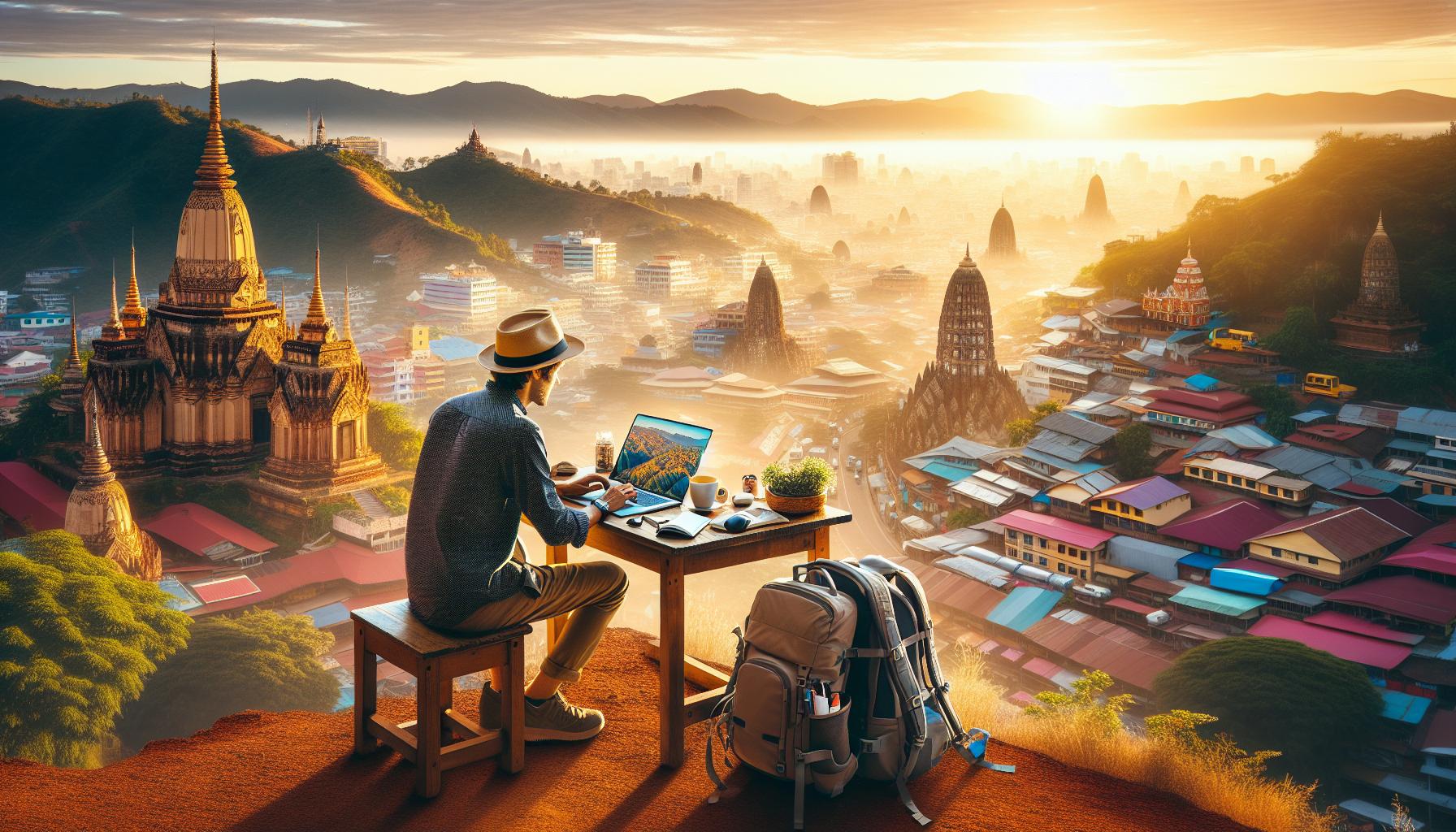
Traveling alone can be one of the most enriching experiences, allowing you to immerse yourself fully in new cultures, but it also comes with a unique set of challenges. As you venture into unfamiliar places, embracing local customs and traditions becomes essential not only for your understanding but also for ensuring your safety. Understanding the cultural context of your destination helps you engage more meaningfully and avoid misunderstandings that could arise from cultural faux pas.
Start by investing time in research before your trip. Familiarize yourself with basic local etiquette-such as greetings, dress codes, and dining customs-which can vary tremendously from one location to another. For example, in many Asian cultures, it is customary to remove your shoes before entering someone’s home, while some Middle Eastern countries may require women to dress modestly in public spaces. Engaging with local customs shows respect and can often lead to more warm interactions with locals, enriching your solo travel experience.
Language barriers can also pose challenges, but they shouldn’t deter you from connecting with others. Learning a few key phrases in the local language can go a long way in fostering goodwill. Words such as “please,” “thank you,” and “hello” not only demonstrate your effort to engage but can also be helpful in building trust with those you meet. In situations where language becomes a significant barrier, non-verbal communication-like gestures, smiles, and eye contact-can effectively convey respect and friendliness.
Lastly, don’t shy away from asking locals for recommendations or directions. Most people appreciate when travelers show interest in their culture and are often more than happy to assist. Whether you’re looking for a hidden gem to explore or the best local cuisine to try, locals can provide insights that guidebooks simply can’t. Engaging with your environment in this way not only enhances your journey but can also create a sense of community, empowering you to navigate the complexities of solo travel with assurance.
How to Find Trusted Accommodation
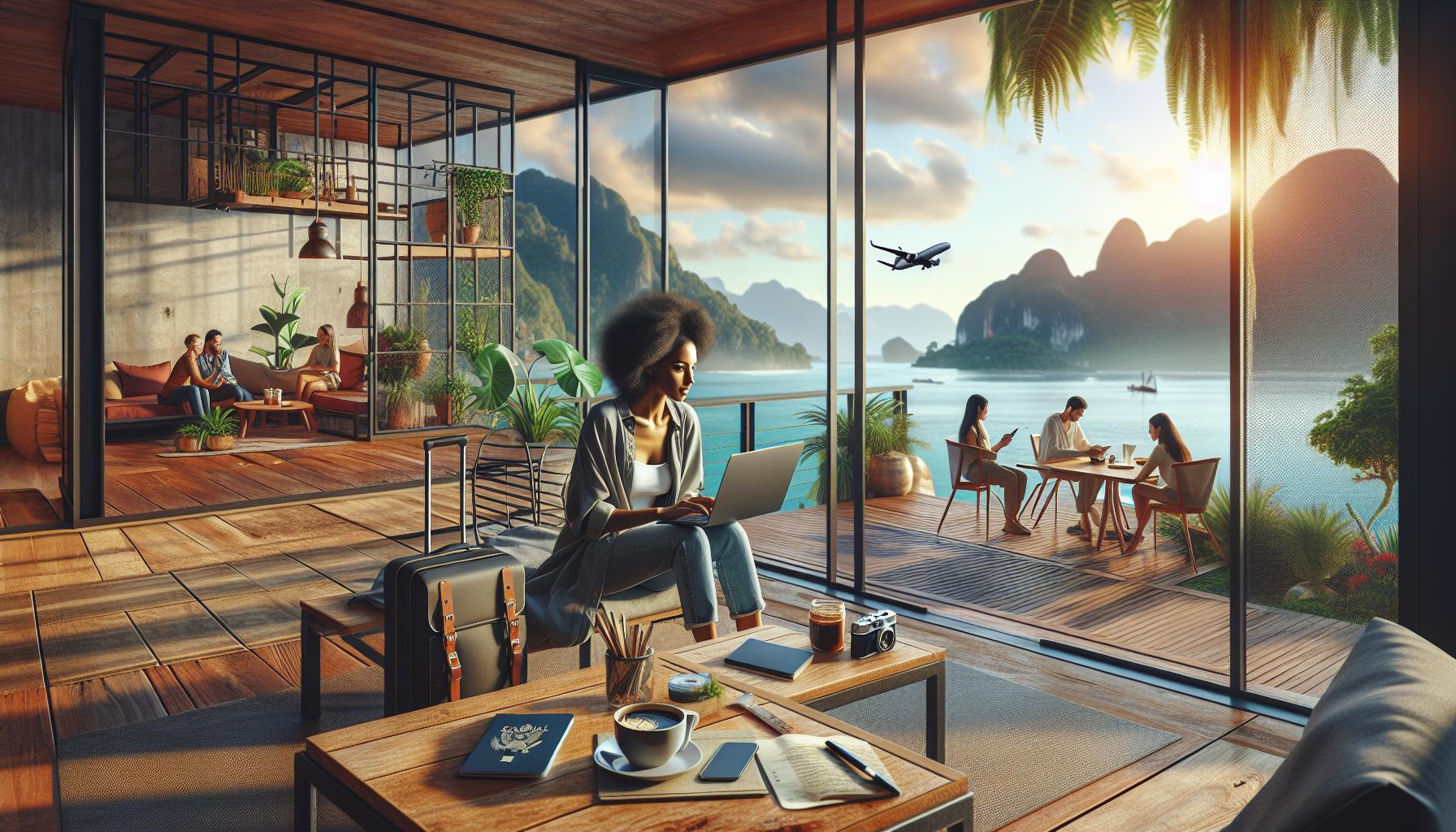
Finding safe and reliable accommodation is a cornerstone of a successful solo travel experience. Your choice of lodging can greatly influence not only your comfort but also your sense of security while you navigate a new environment on your own. Knowing how to identify trustworthy places to stay will empower you to focus on the adventure ahead, free from worrying about your personal safety or well-being.
One of the first steps is thorough research before you even set foot in your destination. Websites that specialize in travel reviews, such as TripAdvisor or Booking.com, offer insights from other travelers regarding the safety and reliability of various accommodations. Filter for places that have consistent positive reviews mentioning safety and security, such as neighborhoods known for being welcoming to tourists. Look for keywords like “safe area,” “friendly staff,” or “great atmosphere for solo travelers.” If you seek a deeper understanding, consider joining travel forums or social media groups where travelers share their experiences; these platforms often provide real-life recommendations based on recent trips.
When booking accommodations, consider options that prioritize safety features, such as hostels or boutique hotels, which typically cater to solo travelers. Look for amenities like 24-hour reception, secure lockers, and on-site staff that can assist you with local insights. For those who appreciate a homier experience, platforms like Airbnb can be an excellent choice-just ensure that you read the reviews thoroughly and verify the host’s credibility. Make sure to communicate with your host before your arrival to clarify any safety concerns.
Additionally, do not underestimate the power of location. Opt for accommodations near public transportation, which not only ensures ease of travel but also indicates a more centralized and often safer area. It’s wise to avoid places that are too remote or located in areas that seem isolated. Once you arrive, familiarize yourself with your surroundings. Understanding the local landscape will help you identify safe routes for exploration and provide peace of mind.
In summary, diligent research, consideration of safety-rated features, and a focus on location are all key elements in finding trusted accommodation. By making informed choices before your journey, you’re setting the stage for a fulfilling and secure solo travel experience. As you embark on your adventure, let your accommodations be a sanctuary that enhances your exploration rather than a source of anxiety.
Staying Connected: Tech Tools for Safety
In today’s interconnected world, leveraging technology can significantly enhance your safety while traveling solo. With just a few apps and devices, you can keep yourself informed, connected, and secure, making your adventures not only exciting but also worry-free.
A crucial step in ensuring your safety is to have reliable communication tools at your fingertips. Consider installing messaging apps like WhatsApp or Signal, which allow you to stay in touch with family or friends without incurring international texting fees. Moreover, sharing your itinerary with someone back home can provide an extra layer of security; let them know where you’re going and when you expect to check in. You might also want to utilize location-sharing features on your smartphone. Both Google Maps and various family locator apps allow chosen contacts to see your real-time location, providing peace of mind for both you and your loved ones.
Essential Apps for Safety
Using specific safety apps can also be invaluable. Here are a few you might consider:
- TripIt: This itinerary management app consolidates all your travel plans in one place, making it easier to navigate your trip.
- VPN Services: Apps like NordVPN or ExpressVPN protect your internet connection, especially on public Wi-Fi networks, securing personal information from potential hackers.
- Emergency Apps: Consider apps like PanicButton or bSafe, which allow you to send instant alerts along with your location to emergency contacts at the touch of a button.
Beyond apps, portable tech gadgets can elevate your safety game. A power bank is critical; it ensures your devices stay charged, which is essential for navigation and communication. Additionally, consider investing in a travel router or a portable Wi-Fi hotspot to maintain a secure internet connection, even in remote areas.
Finally, familiarize yourself with local emergency numbers and resources upon arrival. Many countries have specific hotline numbers for emergencies, and having them easily accessible on your phone can make all the difference in a crisis. With the right tech tools in place, you’ll be well-equipped to explore boldly and securely, allowing you to focus on the amazing experiences awaiting you on your journey.
Emergency Preparedness While Traveling Alone

When embarking on a solo journey, having a well-thought-out emergency preparedness plan can make all the difference in your confidence and peace of mind. First and foremost, knowing the local emergency numbers is crucial. Different countries have varying systems in place, so familiarize yourself with the right numbers for police, medical assistance, and fire services as soon as you arrive. Saving these numbers in your phone under a contact labeled “Emergency” ensures immediate access when needed.
Creating a basic emergency kit can also enhance your preparedness. This shouldn’t be overly complicated but should include essentials such as a first aid kit, any necessary prescription medications, a flashlight, and a portable phone charger. Consider packing a whistle or a personal alarm, which can help draw attention in a potential emergency. In addition, bringing along a small amount of local currency can be advantageous, particularly in situations where credit cards may not be accepted or when immediate cash is needed, such as for transportation.
Communicating Your Plans
Keeping your travel plans transparent with a trusted friend or family member back home is another layer of protection. Share your itinerary, including accommodation details, intended activities, and expected check-in times. Regularly updating your contact with any changes ensures they are always aware of your whereabouts. This practice not only serves as a precaution for your safety but also allows someone to act quickly should you fail to check in.
Staying informed about the locales you’re visiting is paramount. Research areas to avoid, stay updated on local news, and be aware of any travel advisories. Join local expat groups or forums online, which can provide real-time insights and recommendations from others who have navigated similar journeys.
By proactively setting up these safety nets, you’ll empower yourself to embrace your solo travel adventures with confidence and excitement, ready to explore new horizons without unnecessary fear.
Building a Supportive Network Abroad
Navigating the world as a solo traveler can be both liberating and daunting, but establishing a supportive network abroad transforms your experience into something truly enriching. Surrounding yourself with a community can provide safety, guidance, and invaluable insights that enhance not just your journey but also your confidence. Whether it’s connecting with fellow travelers, locals, or expats, leveraging these relationships can be a game-changer in your travels.
One of the most effective ways to build this network is through social media platforms and travel apps such as Meetup, Couchsurfing, or Facebook groups tailored to travelers. Joining these online communities allows you to meet people who share common interests and may be in the same location. Consider attending local events or meetups where you can interact with both locals and fellow travelers in a safe, social environment. This not only creates a sense of belonging but also opens doors to new experiences, tips, and friendships.
Additionally, don’t underestimate the power of local coffee shops, coworking spaces, or friendly hostels, where you can strike up conversations with fellow nomads or locals. Engaging with baristas, shop owners, or your accommodation hosts can lead to introductions to other travelers or knowledgeable locals who may soon become part of your support network. Ask for recommendations on safe areas to explore, hidden gems in the city, or local customs to respect, which can make a significant difference in your experience.
Lastly, consider volunteering or joining a local class while exploring a new destination. Not only does this deeply enrich your cultural experience, but it also connects you with others who share your passion and values, establishing friendships that can last well beyond your trip. By actively seeking and nurturing connections, you’ll find that you can travel boldly with a sense of security, empowered by the knowledge and camaraderie of your network.
Solo Travel Insurance: What You Need to Know
Traveling solo is an exhilarating journey filled with the promise of adventure, but it can also present unforeseen challenges. One of the most crucial steps in ensuring a safe and worry-free experience is securing the right insurance. Solo travel insurance safeguards against the unexpected, whether it’s a medical emergency, trip cancellation, or unexpected disruptions. Knowing the intricacies of travel insurance will empower you to embark on your journey with confidence.
When selecting a travel insurance policy, it’s essential to consider several key factors to tailor coverage to your specific needs. Look for policies that cover a range of scenarios, including:
- Medical Emergencies: Ensure coverage includes emergency medical expenses, evacuation costs, and repatriation if needed.
- Trip Cancellations: Protect your investment against unforeseen cancellations due to illness or family emergencies.
- Lost or Stolen Belongings: Check that your policy provides coverage for lost luggage and stolen personal items.
- Adventure Activities: If you plan to engage in activities like hiking, scuba diving, or other adventure sports, confirm that your policy covers them.
Research and compare different providers, examining the specifics of what each policy includes and excludes. It’s often beneficial to read reviews and learn from the experiences of other travelers to find a reliable provider that meets your needs. Additionally, consider when purchasing your insurance; doing so as soon as you book your trip often allows you to take advantage of coverage from the start, especially regarding cancellation.
Aside from understanding what your policy covers, familiarize yourself with the claims process. Know how to contact your insurance company while abroad, what documentation you may need, and the timeframe for filing claims. Keeping a copy of your insurance policy, emergency contact information, and health care information can also streamline this process.
Ultimately, investing in the right travel insurance is a fundamental aspect of responsible solo travel. By equipping yourself with financial security against the unforeseeable, you allow your adventurous spirit to soar, exploring new cultures and landscapes with peace of mind.
Cultural Nuances: Staying Respectful and Safe
Embracing a wealth of cultural diversity is one of the most enriching experiences of solo travel, yet it also demands a sensitive understanding of local customs and practices. Immersing yourself in new cultures involves more than just sightseeing; it’s about fostering respectful connections and ensuring your presence is welcome. For instance, in some cultures, physical contact or direct eye contact may be considered intrusive, while in others, it is a sign of warmth and friendliness. Being aware of these nuances can dramatically enhance your interactions and keep you safe.
To navigate cultural landscapes confidently, start by conducting thorough research on your destination. Familiarize yourself with key societal norms-such as dress codes, dining etiquette, and common greetings. For example, many countries in the Middle East expect visitors to dress modestly, while in some Southeastern Asian countries, removing shoes before entering homes or temples is standard. Knowing these small details can make a significant difference in how you’re perceived and treated.
- Engage with locals: Take opportunities to chat with residents, as they can provide invaluable insights into cultural rules.
- Learn key phrases: Even a simple “hello” or “thank you” in the local language can go a long way in establishing goodwill.
- Observe and adapt: If you’re unsure about a particular custom, watch how locals interact with each other.
As you travel, remain open-minded and patient. Cultural misunderstandings can happen, but a willingness to learn and a respectful attitude can help diffuse any awkward situations. Always err on the side of caution and politely excuse yourself if you feel a scenario might escalate. Ultimately, your adventures will be marked by authenticity and respect when you honor the rich cultural tapestries of the places you visit, making your solo travel experience not only safe but profoundly transformative.
Empowering Stories of Solo Travelers
Many solo travelers have discovered that the world is not only beautiful but also welcoming. Their stories resonate with courage, resilience, and moments of serendipity, showcasing the transformative power of traveling alone. For instance, a recent traveler named Mia journeyed through the picturesque landscapes of New Zealand. Alone but never lonely, she engaged with fellow adventurers and locals alike, sharing meals and stories under the stars. By blending her itinerary with spontaneous detours, she found hidden gems, like secluded beaches and cozy cafes, that would have remained undiscovered in a group setting.
Stories like Mia’s highlight the importance of mindfulness and openness. Solo travel offers a unique lens through which to interact with different cultures. Consider the experience of Tom, who traveled to Japan and took part in a traditional tea ceremony. His willingness to immerse himself in local customs deepened his appreciation for the culture and forged connections that turned strangers into friends. Each moment invited learning and growth, reinforcing the notion that being alone can lead to a profound sense of community.
To empower aspiring solo travelers, consider these steps that have cultivated enriching experiences for many:
- Document your journey: Keep a travel journal or blog. Reflecting on your experiences can deepen your understanding and encourage others to embark on their own solo adventures.
- Join local events: Participate in workshops, classes, or community gatherings. This not only enriches your experience but also helps you build connections.
- Use social platforms: Leverage platforms like Meetup or Couchsurfing to find others traveling solo in the same area, providing a sense of security and companionship.
By listening to these empowering narratives, future solo travelers can draw inspiration and practical strategies to embark on their journeys. Each story unfolds the idea that while solo travel can be daunting, the rewards of personal growth, newfound friendships, and unforgettable memories make it an adventure worth diving into headfirst.
Solo Travel: How to Embrace Adventure Authentically
Embarking on a solo adventure can be one of the most liberating experiences a traveler can have. It allows for complete autonomy, whether you’re hiking the trails of Patagonia or savoring street food in Bangkok. To truly embrace this journey with authenticity, it’s crucial to strike a balance between exploration and thoughtful engagement with the surrounding cultures.
To begin your adventure, focus on your intentions. What do you hope to discover about the places you visit? Perhaps you want to challenge yourself physically, learn a new skill, or dive deep into local customs. Setting clear goals will not only guide your planning but also enhance your experiences as you navigate through unfamiliar environments. For instance, consider taking a cooking class in Italy to connect with local culinary traditions while meeting fellow travelers and locals. This kind of engagement transforms a simple trip into a deeper journey of self-discovery.
Building an itinerary that is flexible yet structured can also promote authenticity in your travels. Allow room for unexpected encounters and spontaneous activities. Make a list of must-do experiences but leave space to explore local recommendations or follow intriguing directions from friendly locals. The unplanned moments often become the most memorable parts of a trip. For example, a solo traveler in Lisbon might take a recommended tram to a historic castle and, on their way, discover a small art gallery showcasing local talent-a hidden gem that enhances their understanding of the local culture.
Acknowledge and respect cultural nuances as you move through different environments. Researching social norms and etiquette beforehand shows respect and helps foster meaningful interactions. If you’re heading to a temple in Thailand, dress modestly and learn a few basic phrases in the local language. Such gestures not only enhance your experience but also encourage locals to reciprocate, sharing their customs and stories that could enrich your journey.
Lastly, keep an open heart and mind. Authentic travel is not merely about ticking destinations off a list; it’s about the relationships you build and the transformation you undergo. Meet fellow travelers in cafés, join group tours, or participate in community events-these connections can lead to lifelong friendships and profound insights. Solo travel can indeed be a path to adventure, but it can also become a tapestry woven with the insights and stories of others, ultimately creating a richer travel narrative.
Faq
Q: What are the safest countries for solo travel?
A: The safest countries for solo travel include Japan, New Zealand, Iceland, and Finland. These destinations are known for low crime rates, reliable public services, and a welcoming culture, making them ideal for solo adventurers seeking security and comfort.
Q: How can I stay safe when traveling alone in a foreign country?
A: Staying safe while traveling alone involves several strategies: keep your valuables secure, stay aware of your surroundings, avoid risky areas at night, and maintain a copy of important documents. Additionally, invest in a local SIM card for easy communication and use trusted transportation methods.
Q: What precautions should a woman take when traveling solo?
A: Women traveling solo should choose accommodations in well-reviewed areas, avoid sharing personal information, and dress modestly according to local customs. Always trust your instincts-if a situation feels uncomfortable, remove yourself from it promptly. Connecting with other travelers can also provide additional safety.
Q: What solo travel insurance do I need?
A: Essential solo travel insurance should cover emergency medical situations, trip cancellations, lost luggage, and personal liability. Compare policies that provide 24/7 assistance and ensure they include coverage for adventure activities you plan to engage in during your travels.
Q: How do I find reliable travel partners for solo trips?
A: To find reliable travel partners, join solo travel forums or social media groups. Websites like Meetup.com or Backpacker’s Exchange can connect you with other travelers. Ensure you communicate beforehand to assess compatibility and discuss expectations for the trip.
Q: Is it safe to use public transportation while traveling alone?
A: Yes, public transportation can be safe if you take precautions. Research local transit systems, avoid traveling during off-peak hours, and remain vigilant about your surroundings. Keep your belongings secure and be aware of common scams in the area.
Q: How can I prepare for emergencies while traveling alone?
A: Preparing for emergencies includes knowing local emergency numbers, registering with your embassy, and having access to enough cash and mobile battery. Develop a clear plan for various situations, including losing your wallet or needing medical assistance, to help mitigate panic if they occur.
Q: What are some safety apps for solo travelers?
A: Safety apps like TripWhistle, Life360, and Google Maps can greatly enhance your safety while traveling solo. These apps provide emergency contact features, tracking capabilities, and real-time navigation, making it easier to stay safe and connected during your adventures.
These FAQs aim to address various concerns for solo travelers, encouraging safe and confident exploration. For further insights, check the sections on “Essential Safety Tips for Solo Travel” and “Emergency Preparedness While Traveling Alone” in the main article.
Wrapping Up
As you prepare for your solo adventures, remember that exploring the world boldly and securely is absolutely achievable. By choosing destinations that prioritize safety and leveraging the right resources, you can transform your travel dreams into reality. Don’t let fear hold you back – take the first step today! Dive deeper into your travel planning by checking out our insights on essential travel safety tips and packing guides to ensure you’re fully equipped for your journey.
Are you ready to embark on this exciting chapter of your life? We encourage you to subscribe to our newsletter for the latest travel updates and exclusive offers, or explore our community forum to connect with fellow travelers sharing their experiences. Your next adventure awaits, so let’s go boldly and travel securely together! Share your thoughts in the comments below and make sure to follow our blog for inspiring stories and practical advice tailored just for you.

